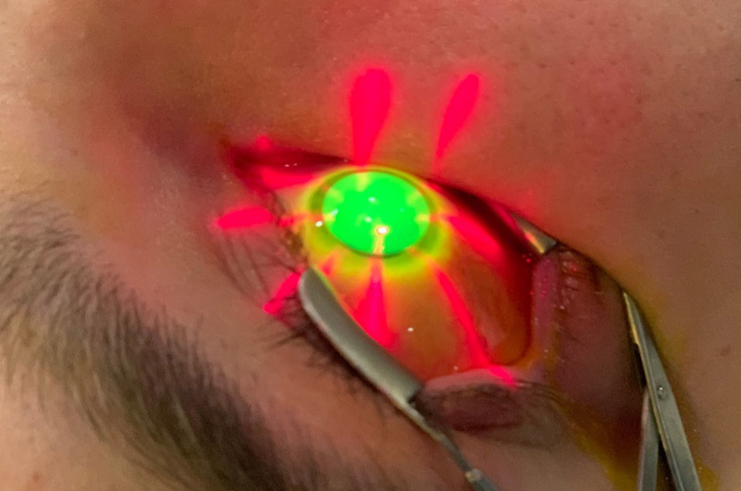 |
| In this study, Kmax did not improve significantly at 10 years post-CXL when compared to baseline. The researchers believed that this confirms that relying on a single point measurement of maximum anterior curvature to judge progression or regression can induce false positive or false negatives. Photo: Lily Arendt, OD. Click image to enlarge. |
Corneal collagen crosslinking with epithelial debridement (epi-off) is a well-established treatment for KC and the original protocol with 3mW for 30 minutes (S-CXL) remains the gold standard treatment, and accelerated protocols have showed benefits in patient's compliance and optimization of clinical workflow. However, there is still uncertainty regarding its long-term effects and the longevity of the structural remodeling it can achieve, especially in young patients. To demonstrate the long-term safety and value of this procedure in the pediatric population, researchers in Italy confirmed the effectiveness of the Dresden protocol of CXL with a significant improvement in visual acuity in young patients, and, most importantly, the stability of this positive effect in the long-term with a mean follow up time of 11.6 years.
The retrospective study, published in American Journal of Ophthalmology, assessed 38 eyes of 24 patients who were younger than 18 years old and completed at least 10 years of follow-up post-op. Corrected distance visual acuity (VA), refraction, tomography with Pentacam (Oculus) were evaluated at baseline and 10+ years after CXL.
At a mean of 11.6 years post-op (maximum follow-up 14 years), corrected distance VA improved significantly (from 0.703 decimal fraction to 0.887). Similarly, A value of the ABCD display significantly improved from 2.550 to 1.627, which corresponds to the anterior radius of curvature in the central 3mm of the thinnest point of the cornea. The team noted that 13 eyes (34%) showed significant postoperative progression of two out of three among A, B and C parameters. Of these, only three eyes (7.9%) of three patients showed a statistically significant change of A value and only 0.1 decimal fraction in corrected distance VA.
“Our study confirms Dresden protocol epi-off CXL as safe and effective treatment for progressive KC in pediatric patients with a progression rate of 34% when considering anterior, posterior surface and thickness and a 7.9% when considering anterior surface only,” the research team concluded in their paper.
Vinciguerra R, Bordignon N, Ferraro V, et al. Corneal collagen cross linking for progressive keratoconus in pediatric patients: up to 14 years of follow-up. Am J Ophthalmol. July 19, 2023. [Epub ahead of print]. |

